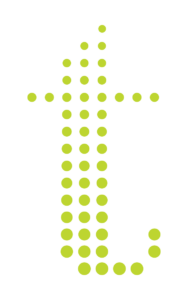Welcome back. This week we’ll be analyzing the claims made about decision making in Talentism’s recent post “What is a ‘Playbook’?”.
In defining a “playbook”, Talentism wanders into the complex, sometimes controversial area of intuitive decision making. Deliberate, rational approaches to decision making have their place, but counterintuitively become more unreliable the more complex the decision due to the increased cognitive load. Intuition, however, is mostly unaffected by cognitive load, and maintains its effectiveness (or lack thereof) regardless of complexity.
This ability is subject to important limitations, however. While there are several ways to approach intuitive decision making, the two that predominate are Naturalistic Decision Making (NDM) model and the Heuristics and Biases [HB] model, associated with Nobel Prize-winning psychologist Daniel Kahneman. While the two approaches have some fundamental differences, there is also much agreement. Any ideas related to intuitive decision making will have to deal with these two different frameworks. Let’s look at some of the claims made in “Playbook”:
You have a business playbook…whether you know it or not.
Science professionals often use terms and concepts that seem needlessly prolix to the public. For both to be on the same page, some translation is sometimes needed. As the field of psychology is less prone to using sports metaphors than businesses, Talentism’s “playbook” can be described scientifically as a collection of heuristics based on priors and prototypes.
What’s that mean? Heuristics, as mentioned in the original article, are simply practical sets of rules used to guide actions. They can be conscious or unconscious, and exist for any set of actions that we execute at any moment. If we had to consciously and deliberately consider every thing we ever did, it would be extremely taxing just to breathe.
Priors refer to a pre-existing notion of the probability a given action will produce the desired effect. This idea is adapted from Bayesian inference, which views probability as a degree of belief rather than a relative frequency. Bayesian statistics, which was developed by the French scholar Laplace in 1812, has recently increased in popularity within the scientific community. This is due to several reasons, one of which is the similarity it has to the way cognition actually works. (Despite the similarity, however, there are still important, peculiarly human characteristics that don’t necessarily follow Bayesian models.)
Most of us think of prototypes as preliminary versions of things, like new cars or hardware. To a psychologist, however, a prototype is the object considered to be the typical representation of something in a category. For instance, the prototype you have for a car might be very similar to a generic sedan. All vehicles perceived are then compared against this prototype to determine if they share the same category. Does it have 4 wheels? A general oblong shape? An engine? In a snap, the new vehicle can be judged a car, or not. This is called the “representativeness heuristic.”
To bring it all together, a “playbook” is collection of actions you take in particular instances. You judge the situation by comparing it to pre-existing prototypes, accounting for pre-existing probabilities. Far more often than not, you do so unconsciously.
Now that we’ve sussed out what is meant by “playbook”, scientifically speaking, do we all have one dealing with business? The answer is an unequivocal “yes”. We don’t consciously create heuristics, priors, and prototypes. They start to form or be used as soon as you encounter a concept. Think of a child’s idea of a dog. Dogs have a tremendous amount of genetic diversity, and the fact that both a Great Dane and a Papillon fit the same category is, on the surface, rather bizarre. And yet young children with no knowledge of genetic lineages can place the Great Dane and the Papillon in a distinct category from a fox. The child does not need to think hard about that distinction; their unconscious brains constructed the category for them, based on experiences with dogs and what others said about dogs. The same holds true for a business playbook. There are myriad accepted behaviors and practices for anything, including businesses, that you did not consciously compile but that you unconsciously execute all the same.
Your playbook has been handed down to you, or built by accident. You didn’t create it.
This isn’t necessarily true, but it is very likely. It is improbable that any given person doing business was dropped into their current situation without training, foreknowledge of basic concepts, or allowed to develop without being subjected to the advice of others. And even if all those were somehow true, the tendency towards mimicking of the attitudes and procedures of those around you is a well known phenomenon.
These sources (schooling, training, social, etc.) help establish priors and category representations through neuroplasticity. The problem with this is that by establishing priors and categories based off of handed down wisdom rather than real world experience, the brain is not able to quickly update habitual responses if they are not grounded in reality. It doesn’t wholesale throw out pre-existing notions once you get a “real” job.
However, once these categories are established, it does not matter if real world experiences do not match what your education had led you to expect. Your brain is not able to quickly change the ways it responds to everyday situations, even if those ways are not grounded in reality. Your brain doesn’t throw out false pre-existing notions of how things work once you begin to establish a career.
Your playbook rarely gets improved. You don’t know it’s there, so you can’t change it.
Under ideal circumstances, this isn’t true. Important for both the HB and NDM frameworks is the idea of validity. Validity describes the causal and statistical structure of an environment in which decisions are being made. Skilled intuition needs high validity and practice to develop. Validity can be compromised both if the environment is too complex to reasonably handle over a given timescale (though different individuals will be have different levels of skill), but also if the causal understanding of an event is not correctly identified. One might think consistent negative feedback from faulty judgments would lead linearly to better decision making, unconsciously; however, the correlation between confidence in a track and the likelihood of that decision being correct is not high, even among experts. Improvements in decision making can happen when results do not match expectations, but only if the causal nature of the environment is clear. If your playbook doesn’t match the environment, and you’re not even aware of having a playbook in the first place, it stands to reason that no improvements will be made.
The world of intuitive expertise is complicated and evolving. Talentism’s metaphor of a “playbook” may not immediately seem scientifically oriented, but upon analysis reveals itself to be largely grounded in the scientific community’s understanding of how people make decisions. We’ll check back in next time they make science-based arguments.


